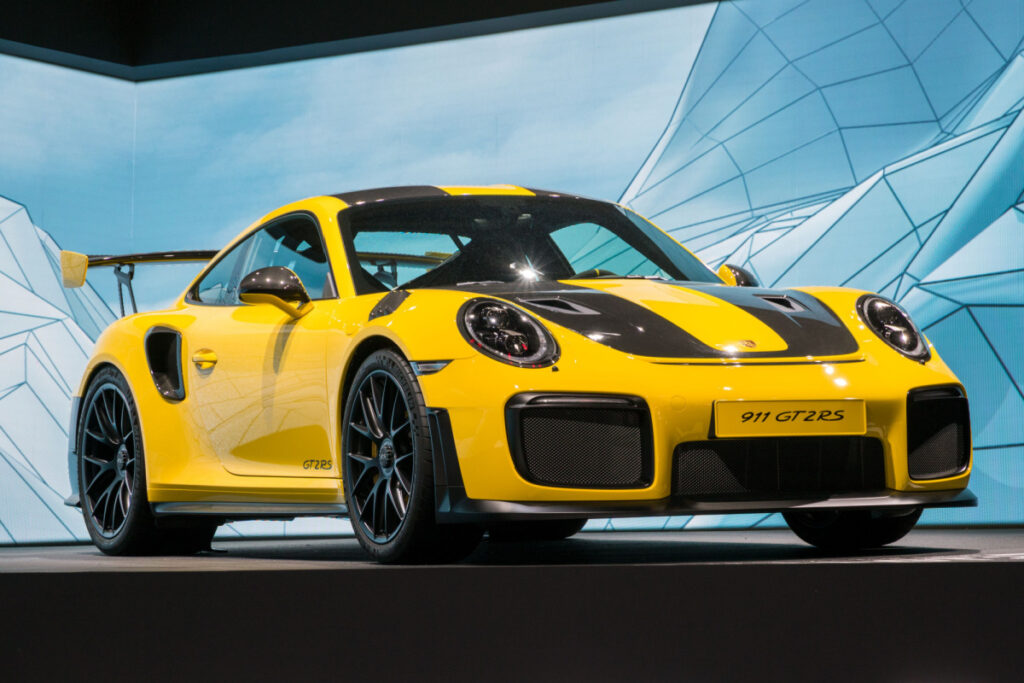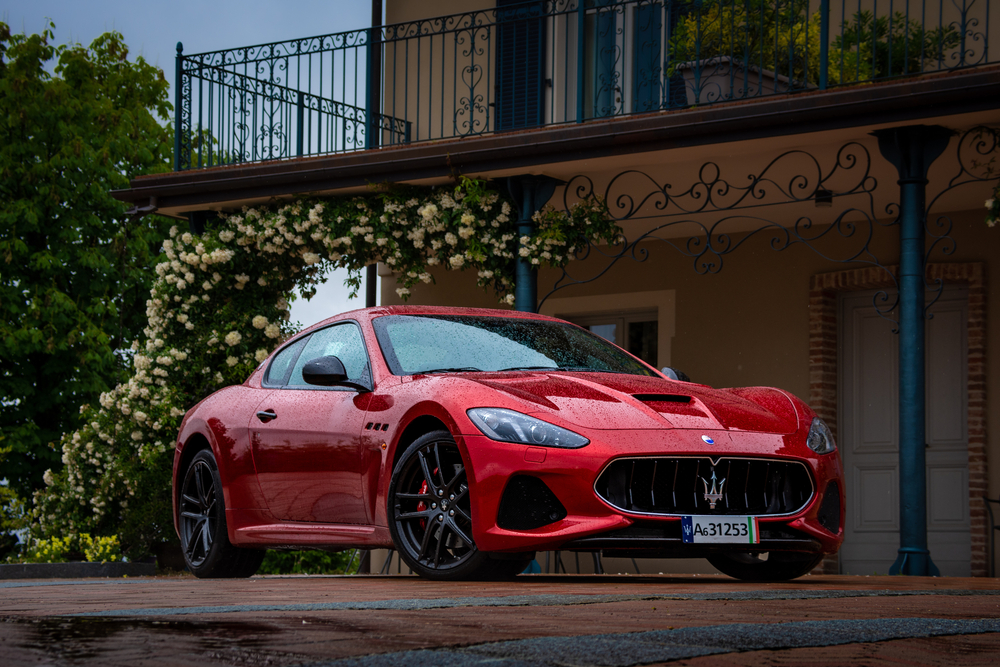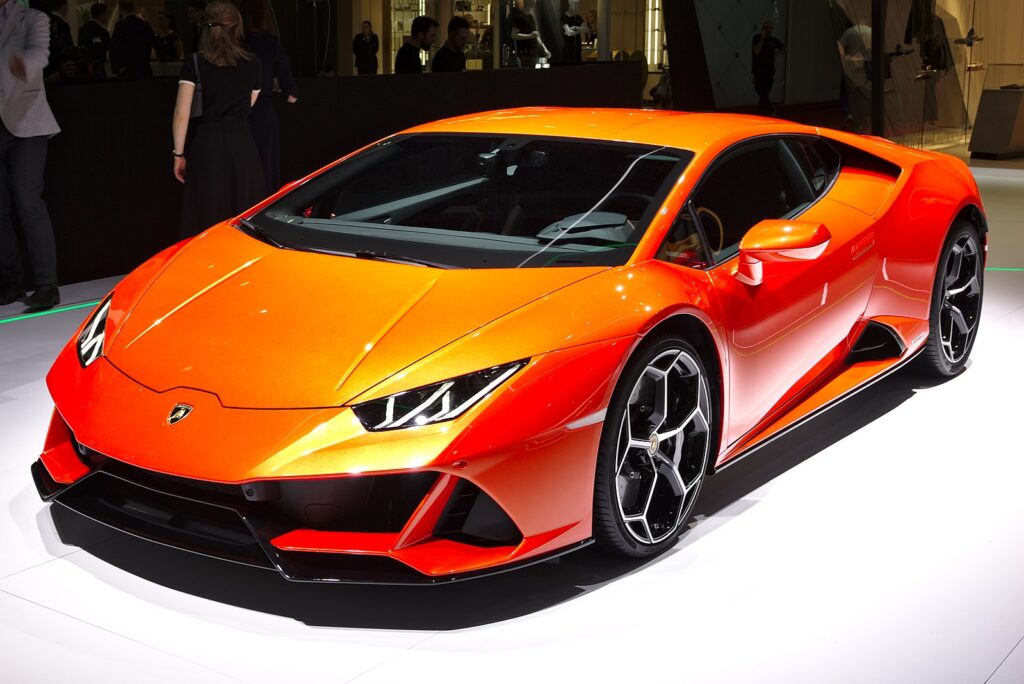When it comes to performance cars, speed and power often take center stage, while fuel efficiency falls by the wayside. Some of the most thrilling cars on the market today are notorious for their fuel-guzzling engines, prioritizing horsepower and acceleration over gas mileage. We’ll take a look at 18 performance cars that made no effort to be fuel-efficient, proving that sometimes, speed comes at a cost.
Contents
Bugatti Veyron

The Bugatti Veyron’s engineering focus was squarely on breaking speed records, not on conserving fuel. Its 8.0-liter quad-turbo W16 engine delivered over 1,000 horsepower, ensuring thrilling performance but disastrous fuel economy. With just 10 miles per gallon in city driving, it guzzled gas with no apologies. The car’s aerodynamic design and immense power were crafted for high speeds, while fuel efficiency took a backseat. It is the epitome of a supercar built for power over practicality.
Lamborghini Aventador

Lamborghini’s Aventador was designed around its monstrous naturally aspirated 6.5-liter V12 engine, producing more than 700 horsepower. Achieving only 9 mpg in the city, it made no attempt to hide its fuel-hungry nature. The car’s priority was to deliver jaw-dropping speed, acceleration, and raw, unfiltered power. Its high-revving V12 provided exhilarating performance, while efficiency was simply an afterthought. For Lamborghini, building a car like the Aventador meant prioritizing thrills over fuel conservation.
Dodge Challenger SRT Hellcat

With a 6.2-liter supercharged V8 engine, the Dodge Challenger SRT Hellcat was designed to offer 707 horsepower and adrenaline-pumping speed. Its dismal 13 mpg in the city highlighted just how fuel-inefficient it truly was. Dodge focused on making the Hellcat a straight-line beast capable of demolishing the quarter-mile, with little regard for fuel costs. Its heavy weight and power-packed engine ensured that fuel economy was never part of the conversation.
Ferrari F12 Berlinetta

Ferrari’s F12 Berlinetta, powered by a naturally aspirated 6.3-liter V12 engine, delivered 730 horsepower while managing a mere 11 mpg in urban settings. Built for high performance and handling precision, it prioritized speed over fuel efficiency. The car’s aerodynamic design and engine power were geared toward thrilling drivers on open roads or tracks. Fuel savings were never a primary concern, as Ferrari crafted the F12 for those who demand performance at any cost. It represents the epitome of a grand tourer focused on exhilaration.
Ford GT (2020)

Despite its smaller 3.5-liter twin-turbo V6, the Ford GT still struggled with efficiency, offering only 12 mpg in the city. Designed to be an American supercar, it was focused on delivering top-notch performance through its lightweight construction and advanced aerodynamics. Ford chose speed and agility over any meaningful fuel savings, embracing the heritage of the original GT40. The GT excelled in performance metrics, especially on the track, but its fuel consumption was a clear downside. For this supercar, efficiency was simply not a priority.
Chevrolet Corvette ZR1

The Chevrolet Corvette ZR1, with its supercharged 6.2-liter V8, produced a staggering 755 horsepower but was woefully inefficient with just 12 mpg in city driving. Designed for ultimate performance, Chevrolet engineered the ZR1 to rival some of the world’s most powerful supercars. Its aggressive aerodynamics and powerful engine were key to its success, but they came at the cost of fuel economy. Speed, downforce, and handling took precedence over eco-consciousness. Fuel efficiency was simply a trade-off that Chevrolet was willing to make.
Aston Martin DBS Superleggera

Aston Martin’s DBS Superleggera was equipped with a 5.2-liter twin-turbo V12 engine, generating an impressive 715 horsepower. Despite its luxury appeal, the car managed just 14 mpg in city driving, making it far from fuel-efficient. The emphasis on power and luxurious comfort outweighed any considerations for fuel savings. With a focus on delivering an exhilarating driving experience, Aston Martin paid little attention to efficiency. For drivers seeking both luxury and speed, the DBS Superleggera delivered, but at the cost of high fuel consumption.
Mercedes-AMG G63

The Mercedes-AMG G63, powered by a 4.0-liter twin-turbo V8 engine, emphasized brute power over fuel economy. Achieving only 13 mpg in the city, it became one of the least fuel-efficient SUVs on the market. Designed to blend luxury with off-road capability, the G63 prioritized performance with 577 horsepower on tap. The SUV’s boxy design hindered its aerodynamics, further diminishing any chance at efficiency. Mercedes-AMG built the G63 for those who want luxury and power without caring about fuel costs.
Porsche 911 GT2 RS

The Porsche 911 GT2 RS, known for its 3.8-liter twin-turbo flat-six engine, was a track-focused car that made no compromises in fuel efficiency. It achieved only 15 mpg in combined driving, a small price to pay for 700 horsepower. Porsche engineers designed the GT2 RS for maximum performance on the racetrack, where speed and handling were critical. Fuel economy wasn’t even a secondary consideration for this supercar. Instead, the GT2 RS delivers a pure driving experience with blistering speed.
McLaren 720S

McLaren’s 720S, with its 4.0-liter twin-turbocharged V8 engine, generated 710 horsepower, yet its fuel economy remained a low priority. With just 15 mpg in the city, the car prioritized lightweight construction and aerodynamics. The goal was to create a supercar capable of competing with the best, offering breathtaking acceleration and top speeds. McLaren focused on performance and agility, leaving fuel efficiency in the dust. The 720S is proof that high performance and fuel savings rarely go hand-in-hand.
Lexus LFA

The Lexus LFA, featuring a 4.8-liter V10 engine, produced 553 horsepower but guzzled fuel, managing just 11 mpg in city driving. Built as a showcase of Lexus’ engineering prowess, it prioritized performance and sound over efficiency. With a high-revving engine designed using Formula 1 technology, the LFA was all about delivering a thrilling driving experience. Efficiency was never a key objective for this exclusive vehicle. For Lexus, the LFA was a statement of intent, not a lesson in fuel savings.
Bentley Continental GT

The Bentley Continental GT, with its 6.0-liter W12 engine, combined luxury with power, but fuel efficiency wasn’t in the mix. It achieved just 12 mpg in city driving, which was reflective of Bentley’s focus on comfort and performance. The W12 engine was designed for effortless acceleration, making the Continental GT a capable grand tourer. Bentley buyers value refinement and opulence, not fuel savings. The car’s impressive power and weight simply make efficiency an unrealistic goal.
Pagani Huayra

Pagani’s Huayra, powered by a 6.0-liter twin-turbo V12, delivered 730 horsepower and shockingly low fuel efficiency. Managing only 12 mpg in city driving, the Huayra was designed for exclusivity and speed rather than economy. Pagani focused on crafting a hypercar that combined artistic design with engineering brilliance. The Huayra’s engine, sourced from AMG, was designed to provide immense power without concern for fuel efficiency. For Pagani, performance and craftsmanship far outweighed any thoughts of saving fuel.
Koenigsegg Agera RS

The Koenigsegg Agera RS, with its 5.0-liter twin-turbo V8, pushed out an astonishing 1,160 horsepower, yet it delivered just 11 mpg in the city. This hypercar was built with one goal in mind: shattering speed records. Fuel efficiency was the last consideration in the car’s design, as Koenigsegg focused on weight reduction and performance. The Agera RS was all about pushing the limits of what a car can achieve, with little regard for practicality. It is a testament to extreme engineering, not eco-friendliness.
Audi R8 V10

The Audi R8 V10, with its naturally aspirated 5.2-liter V10, prioritized a thrilling driving experience over efficiency. Achieving only 14 mpg in the city, the R8’s focus was on delivering 602 horsepower through a smooth and responsive engine. Sharing its powerplant with the Lamborghini Huracán, the R8 offered supercar performance in a daily-driver package. Efficiency was sacrificed to ensure that the car maintained its exhilarating speed and handling. Audi’s R8 delivers thrills at the pump’s expense.
Maserati GranTurismo

Maserati’s GranTurismo, equipped with a 4.7-liter V8, prioritized luxury and performance but struggled with fuel efficiency, managing just 13 mpg in urban driving. Maserati built the GranTurismo to be an Italian grand tourer with a stylish design and a powerful engine. The car’s emphasis on providing a luxurious driving experience with an intoxicating engine note took precedence over saving fuel. Maserati’s focus was always on passion and performance. This left efficiency as an afterthought.
Shelby GT500

Ford’s Shelby GT500, featuring a 5.2-liter supercharged V8, was designed to deliver an immense 760 horsepower, but it achieved only 12 mpg in the city. The GT500’s roots are firmly planted in the muscle car tradition, where power and speed are prized above all else. Ford aimed to create a car that could go toe-to-toe with the fastest on the road. Fuel savings, however, were not in the design brief. The Shelby GT500 is a car for enthusiasts who value raw power over fuel efficiency.
Lamborghini Huracán

The Lamborghini Huracán, with its 5.2-liter V10 engine, produced 631 horsepower but managed a disappointing 13 mpg in city driving. Despite being more approachable than the Aventador, the Huracán still emphasized speed and excitement over fuel conservation. Its naturally aspirated V10 delivers exhilarating power, but efficiency was never a consideration. Lamborghini designed this supercar to offer pure driving pleasure, and fuel savings were sacrificed for performance. The Huracán embodies Lamborghini’s commitment to power and passion.
This article originally appeared in MyCarMakesNoise.
More from MyCarMakesNoise
19 TV Cars That Drove Their Way into Pop Culture History

TV shows have given us some unforgettable characters over the years, but it’s not just the actors who steal the spotlight. Some of the most iconic TV moments feature incredible cars that have become stars in their own right. Read More.
20 Affordable Used Cars That Are Known to Last

Looking for a reliable car that won’t break the bank? Buying a used vehicle can be a smart choice, especially when you choose models known for their longevity. Read More.
18 Vehicle Safety Features That Are Often Unnecessary

Many modern vehicles come packed with safety features designed to keep drivers and passengers safe. However, not all of these features are as essential as they seem. Read More.














